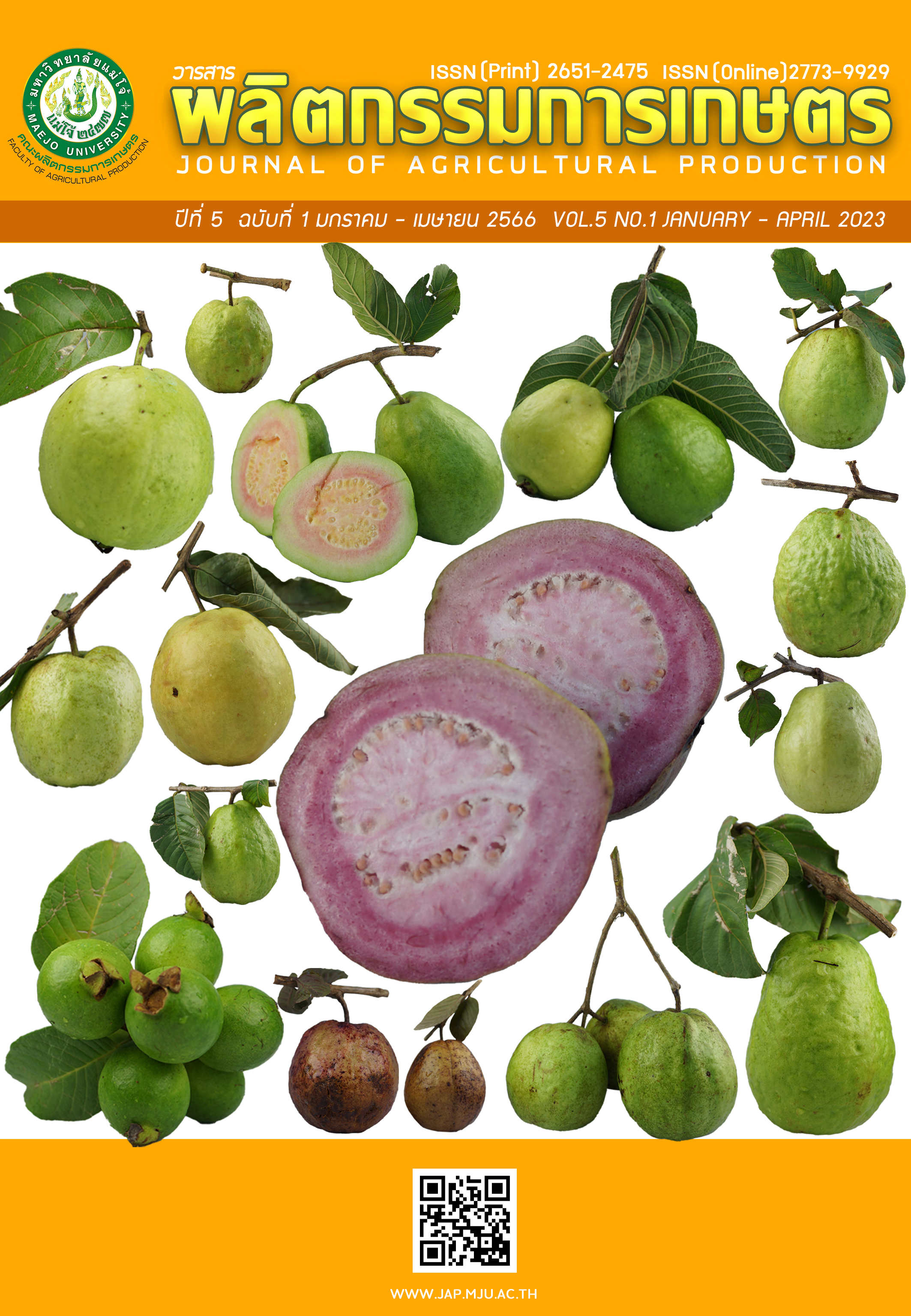เงื่อนไขความสำเร็จของศูนย์ข้าวชุมชนในภาคเหนือตอนล่างของประเทศไทย
Main Article Content
บทคัดย่อ
การดำเนินงานของศูนย์ข้าวชุมชนส่วนใหญ่ยังพบปัญหาอุปสรรคหลายประการที่ส่งผลให้ไม่ประสบ ความสำเร็จตามวัตถุประสงค์ของการจัดตั้งศูนย์ การวิจัยครั้งนี้มีวัตถุประสงค์เพื่อศึกษาเงื่อนไขความสำเร็จ ของศูนย์ข้าวชุมชนในภาคเหนือตอนล่างของประเทศไทย เป็นการวิจัยเชิงคุณภาพที่เก็บรวบรวมข้อมูลจากศูนย์ข้าวชุมชนที่ได้รับรางวัลจากการประกวดศูนย์ข้าวชุมชนใน 4 จังหวัด ได้แก่ จังหวัดนครสวรรค์ จังหวัดพิษณุโลก จังหวัดกำแพงเพชร และจังหวัดพิจิตร จังหวัดละ 1 ศูนย์ รวม 4 ศูนย์ โดยการสนทนากลุ่มกับคณะกรรมการจำนวน 6-8 คนต่อศูนย์ วิเคราะห์ข้อมูลโดยใช้การวิเคราะห์เนื้อหาจากเอกสาร และการวิเคราะห์สรุปอุปนัยจากการสนทนากลุ่มมาสร้างข้อสรุป ผลการวิจัยพบว่าศูนย์ข้าวชุมชนสามารถดำเนินการได้ตามเป้าหมายของการจัดตั้งศูนย์ คือการผลิตเมล็ดพันธุ์ข้าวและการกระจายเมล็ดพันธุ์ เพื่อช่วยลดปัญหาการขาดแคลนเมล็ดพันธุ์ข้าวคุณภาพดีของเกษตรกร โดยมีเงื่อนไขที่ส่งผลให้ศูนย์ข้าวชุมชนประสบความสำเร็จ 4 ด้าน ได้แก่ 1) ด้านการบริหารจัดการ การวางแผนการดำเนินงาน การจัดการความเสี่ยง การคัดเลือกคณะกรรมการให้ตรงกับความสามารถ การมีผู้นำที่ดี การมีส่วนร่วมของสมาชิก การประชุมอย่างสมํ่าเสมอ การมีงบประมาณที่เพียงพอ การสนับสนุนจากหน่วยงานราชการและเอกชน 2) ด้านการผลิตเมล็ดพันธุ์คุณภาพ ความรู้และทักษะในการผลิตเมล็ดพันธุ์ สถานที่และวัสดุอุปกรณ์สำหรับผลิตเมล็ดพันธุ์ เทคโนโลยีการผลิตเมล็ดพันธุ์ คุณภาพของเมล็ดพันธุ์ มาตรฐานการผลิตเมล็ดพันธุ์ 3) ด้านการสร้างเครือข่าย การสร้างเครือข่ายการผลิตและการตลาด การแลกเปลี่ยนเรียนรู้ และ 4) ด้านการพัฒนากลุ่มเพื่อความยั่งยืน การต่อยอดกิจกรรม การพัฒนาเกษตรกรรุ่นใหม่
Article Details

อนุญาตภายใต้เงื่อนไข Creative Commons Attribution-NonCommercial-NoDerivatives 4.0 International License.
เอกสารอ้างอิง
กรมการข้าว. 2551. คู่มือเจ้าหน้าที่ผู้รับผิดชอบศูนย์ข้าวชุมชน. โรงพิมพ์ชุมนุมสหกรณ์การเกษตรแห่งประเทศไทย จำกัด, กรุงเทพฯ.
กรมส่งเสริมการเกษตร. 2544. คู่มือการดำเนินงานศูนย์ส่งเสริมและผลิตพันธุ์ข้าวชุมชน. กลุ่มข้าว กองส่งเสริมพืชไร่นา, กรุงเทพฯ.
กรมส่งเสริมการเกษตร. 2559. การปรับปรุงทะเบียนเกษตรกร. แหล่งข้อมูล http://farmer.doae.go.th/ecoplant/eco_report/report1_regis_59 (30 มีนาคม 2560).
บังอร วงศ์ป้อง และสาธิต อดิตโต. 2560. การวางแผนเชิงกลยุทธ์เพื่อพัฒนาศูนย์ข้าวชุมชนห้วยยางศรีวิไล อำเภอเขาสวนกวาง จังหวัดขอนแก่น. แก่นเกษตร 45(พิเศษ 1): 493-496.
สัจจา บรรจงศิริ. 2552. รูปแบบการพัฒนาศูนย์ข้าวชุมชน. วิทยานิพนธ์วิทยาศาสตรดุษฎีบัณฑิตสาขาวิชาเทคโนโลยีการผลิตพืช, สำนักวิชาเทคโนโลยีการเกษตร, มหาวิทยาลัยเทคโนโลยีสุรนารี.
สำนักงานสหกรณ์จังหวัดนครศรีธรรมราช. 2559. Knowledge Management กลุ่มเกษตรกรโรงสีข้าวชุมชนตำบลป่าระกำ. แหล่งข้อมูล http://km.cpd.go.th/pdf-bin/pdf_8074680618.pdf (5 สิงหาคม 2564).
สุพรรัตน์ ทองฟัก นิภาภรณ์ อนะวัชกุล ปวีรัฐ ภักดีณรงค์ และมนตรี ธรรมพัฒนากูล. 2553. การศึกษาความเป็นไปได้ในการลงทุนผลิตเมล็ดพันธุ์ข้าวของศูนย์ข้าวชุมชนในอำเภอเมือง จังหวัดพิษณุโลก. รายงานการประชุมวิชาการ ครั้งที่ 5, มหาวิทยาลัยเทคโนโลยีราชมงคล. มหาวิทยาลัยเทคโนโลยีราชมงคลพระนคร. กรุงเทพฯ. น. 67-73.
อังคณา สุวานิช. 2555. การพัฒนาศูนย์ข้าวชุมชนอำเภอมโนรมย์ จังหวัดชัยนาท. วิทยานิพนธ์เกษตรศาสตรมหาบัณฑิต สาขาวิชาส่งเสริมและพัฒนาการเกษตร, มหาวิทยาลัยสุโขทัยธรรมาธิราช.
อัญชลี ประเสริฐศักดิ์ และสุรพล จัตุพร. 2556. การพัฒนารูปแบบการผลิตเมล็ดพันธุ์ข้าวโดยเกษตรกร. สำนักงานพัฒนาการวิจัยการเกษตร (องค์การมหาชน), กรุงเทพฯ.
Alexander, B., H. Johnson, L. Shaw and S. Vicari. 2016. What makes rural cooperatives resilient in developing countries. The Open University’s repository of research publications and other research outputs 28(1): 89-111.
Anania, P. and C.G. Rwekaza. 2016. The determinants of success in agricultural marketing co-operatives in Tanzania: the experience from Mweka Sungu, Mruwia and Uru North Njari agricultural marketing co-operatives in Moshi District. European Journal of Research in Social Sciences 4(3): 62-75.
Boyer, D., H. Creech and L. Paas. 2008. Critical success factors and performance measures for start-up social and environmental enterprises. The SEED Initiative and International Institute for Sustainable Development, Switzerland.
Budi, S., H.A. Hamid and F. Agussabti. 2017. The impact of agriculture extension partnership model on rice seed farmers in Aceh Province. International Journal of Environmental & Science Education 12(9): 2011-2018.
Cochrun, S.E. 1994. Understanding and enhancing neighborhood sense of community. Journal of planning literature 9: 92-99.
Flavio, A.C. 2015. Community seed banks in Oaxaca. pp. 136-139. In: R. Vernooy, P. hrestha and B. Sthapit (eds.). Community Seed Banks. Taylor & Francis Group. Oxon.
Guei, G.R., A. Barra and D. Silué. 2011. Promoting smallholder seed enterprises: quality seed production of rice, maize, sorghum and millet in northern Cameroon. International Journal of Agricultural Sustainability 9(1): 91-99.
Jimi, D., M. Jimi and P. Shrestha. 2015. The community seed bank in Tamaphok. pp. 144-147. In: R. Vernooy, P. hrestha and B. Sthapit (eds.). Community Seed Banks. Taylor & Francis Group. Oxon.
Khanal, P.N. 2013. Sustainability of community-based rice seed production: a case study in The tarai region of Nepal. Ph.D. Thesis in International Development and Cooperation, Hiroshima University.
Latynskiy, E. and T. Berger. 2016. Networks of rural producer organizations in Uganda: what can be done to make them work better?. World Development 78: 572-586.
McClelland, G.I., A. Gartmann and H.V. Rees. 2004. The power of the farmer group. Proceedings of the 4th International Crop Science Congress. Brisbane, Australia. pp. 1-11.
Milone, P. and F. Ventura. 2018. New generation farmers: rediscovering the peasantry. Journal of Rural Studies 65: 43-52.
Monyo, E.S., D.D. Rohrbach and M.A. Mgonja. 2004b. New partnerships to strengthen seed systems in Southern Africa: innovative community commercial seed supply models. pp. 11-18. In: P.S. Setimela, E. Monyo and M. Bänziger (eds.). Successful community-based seed production strategies. CIMMYT. Mexico.
Monyo, E.S., M.A. Mgonja and D.D. Rohrbach. 2004a. An analysis of seed systems development, with special reference to smallholder farmers in Southern Africa: issues and challenges. pp. 3-10. In: P.S. Setimela, E. Monyo and M. Bänziger (eds.). Successful communitybased seed production strategies. CIMMYT. Mexico.
Nji, M.P. and D.F. Engwali. 2019. Determinants of success and sustainability of farmer organizations in the North West Region of Cameroon. Asian Journal of Agricultural Extension, Economics & Sociology 37(4): 1-13.
Ortmann, G.F. and R.P. King. 2007. Agricultural cooperatives II: can they facilitate access of small-scale farmers in South Africa to input and product market. Agricultural Economics Association of South Africa (AEASA) 46(2): 1-26.
Peter, O. and J. Nilsson. 2009. Members’ perception of their participation in the governance of cooperatives: the key to trust and commitment in agricultural cooperatives. Agribusiness 25(2): 181-197.
Qing, P., C. Li, S.H.J. Chan and S. Deng. 2020. Farmer entrepreneurs in China: an empirical investigation of their motivations, success factors, and challenges faced. Journal of Small Business and Entrepreneurship 33(3): 349-369.
Sisay, T.D., J. H. M. Frans and C. M. Hans. 2017. Seed producer cooperatives in the Ethiopian seed sector and their role in seed supply improvement: a review. Journal of Crop Improvement 31(3): 323-355.
Veerakumaran, G. 2007. Ethiopian cooperative movement-an explorative study. Department of Cooperatives Faculty of Dry Land Agriculture and Natural Resources, Mekelle University.


